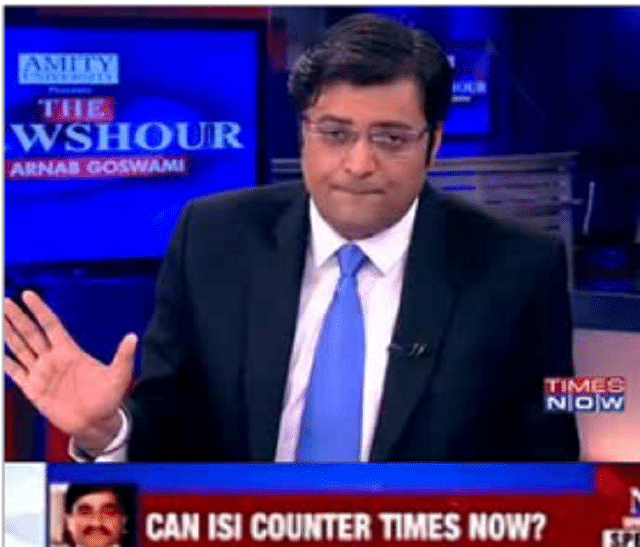
Constructive Media: Moving Beyond Crime, Corruption And Controversies
The media too must think of sharing a slice of space with the do-gooders, encouraging efforts for transformation, enlivening hopes and igniting aspirations writes Vinay Sahasrabuddhe
This is the season of conclaves and conferences and media houses seem to be competing with each other in honouring innovators, selfless social workers and in some cases, institution builders as well. It is always very inspiring to watch such events on television channels and understand the great work done by individuals and organisations. World over, numerous management wizards keep studying and inventing newer and more effective methods of what they call as Supply Chain Management. However, the world is yet to come across a sustainable mechanism of a Supply Chain Management ensuring a sustainable, unhindered and very strong motivational and inspirational inputs. Motivation, after all is a significant vitamin, extremely critical for a meaningful human life and yet something no dietician can possibly prescribe you.
Media, the omnipresent source of information, made available through multiple platforms and forums could in fact be the key to this effective management of Supply Chain of Motivation. This is mainly because the traditionally important role of media is not just informing people to ensure the shaping of an informed public opinion, but also educating them. And motivation is the basic prerequisite of education. Since media content plays a disproportionately great role in motivating or de-motivating the readers or viewers, nature of ingredients of these contents become extremely critical.
Decades ago, while interacting with the then Chairman of Maharashtra Legislative Council, when a group of students of political science expressed their anguish about the politics of pandemonium routinely indulged in by the honourable legislators, he expressed his utter helplessness and made a profound comment that “it is the manner in which our media covers proceedings that shapes the behaviour of our legislators !”
Realising that the students were a bit perplexed by his comment, he explained that media relished sensationalising legislature proceedings and every variety of pandemonium– from entering into the well, to throwing paper-balls, to breakking microphones and coming to blows– since all of it made for spicy news. News of these ‘heroisms’ also reaches the respective constituencies of legislators.
“As against this, legislators who make a brief speech and some studied intervention, logical arguments and forceful presentations, don’t even get a single line reference in the news” the council Chairman rued, adding ” those who use legislative or parliamentary platforms for a cause in a constructive manner, slowly start losing their motivation as media-driven public discourse neither rewards the do-gooders nor punishes the ruckus creators. Tell me, how would politics of pandemonium stop?”
Not just politics of pandemonium but the recurring sense of desperation and disappointment in certain sections of society has a close connection with negativism that spreads like an epidemic, mainly thanks to a large section of media. More often than not, media fails to see beyond news that sells, and normally, it is negativism.
Negative news has always been easy to serve with attractive garnishing, added flavours and tasty spices. Crime, corruption and controversies are the most sellable news items as there is an assured market.
True that media also has to conduct itself as a business and can’t avoid market pressures. While it is perfectly understandable that people are served everything that they like to have, is it not also the responsibility of the media to try to shape the popular tastes, leading the readers to possibly less attractive but constructive thoughts and positive actions? If constructive approaches and actions are not taken any notice of, how would society be motivated towards them?
This negativist streak is prominently at display almost everywhere. Take the example of the prominent themes routinely selected for research in social sciences. Most of them are about some problems, issues of degeneration and decay. True, our society – like many other societies in the world — has still not overcome forces of injustice, exploitation and deprivation and they need deeper research and extensive deliberations. But then what about documenting those strugglers who have, individually or as a community, walked on untrodden paths and achieved their goals successfully?
Most of the themes presented through literature, theatre or cinema portray — and factually so — as to how exploitation continues. However, how can one defend that this is done almost absolutely ignoring the real-life stories of those who have fought with it very successfully?
This, of course, is not to suggest that the media has to turn a Nelson’s eye to all the wrong doers. Media has to be watchful and educate people about all that is unjust and atrocious. But as in CSR, where companies are compelled to share their profits with the non-profits, media too must think of sharing a slice of space with the do-gooders, encouraging efforts for transformation, enlivening hopes and igniting aspirations. In spite of several crises, every society sustains itself simply because good, well-meaning and law abiding people are always in majority. Constructivism in Media is a tool to recognise them.
Happily, international media is slowly becoming more conscious to the need for constructivism and prestigious newspapers like The Washington Post as well as New York Times have now started regular columns offering space for positivity. Few regional language newspapers too have started regular columns facilitating coverage of positive happenings. An independent portal like Better India is doing a great service encouraging the self-motivated individuals doing great service. Certain media training institutions abroad too have started courses in constructive media.
It is required that this trend is institutionalised through multiple efforts as media is not just disseminating information, much less aimed at pure entertainment. It is, first and foremost an educator of the society and in the process effectively shapes public opinion.